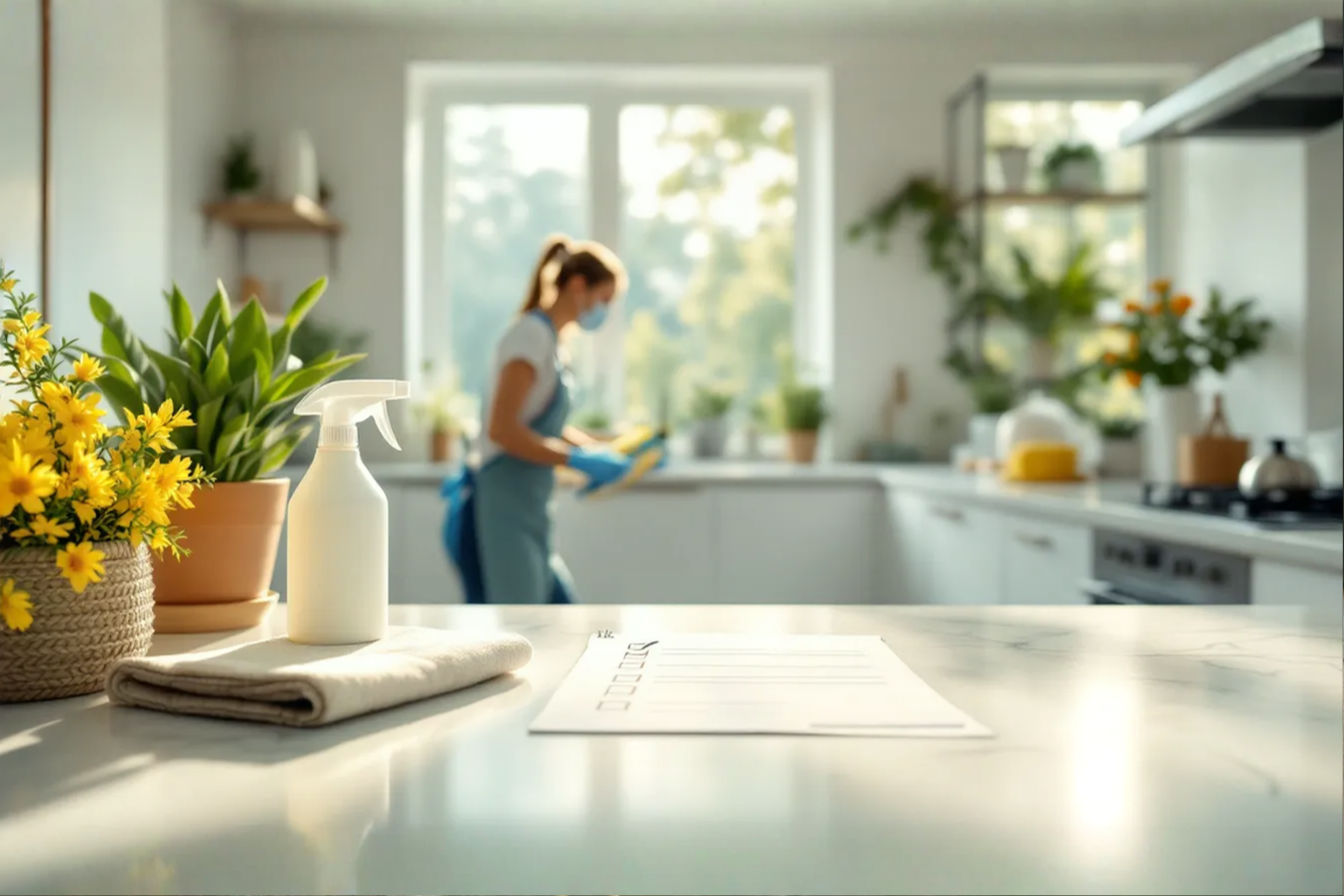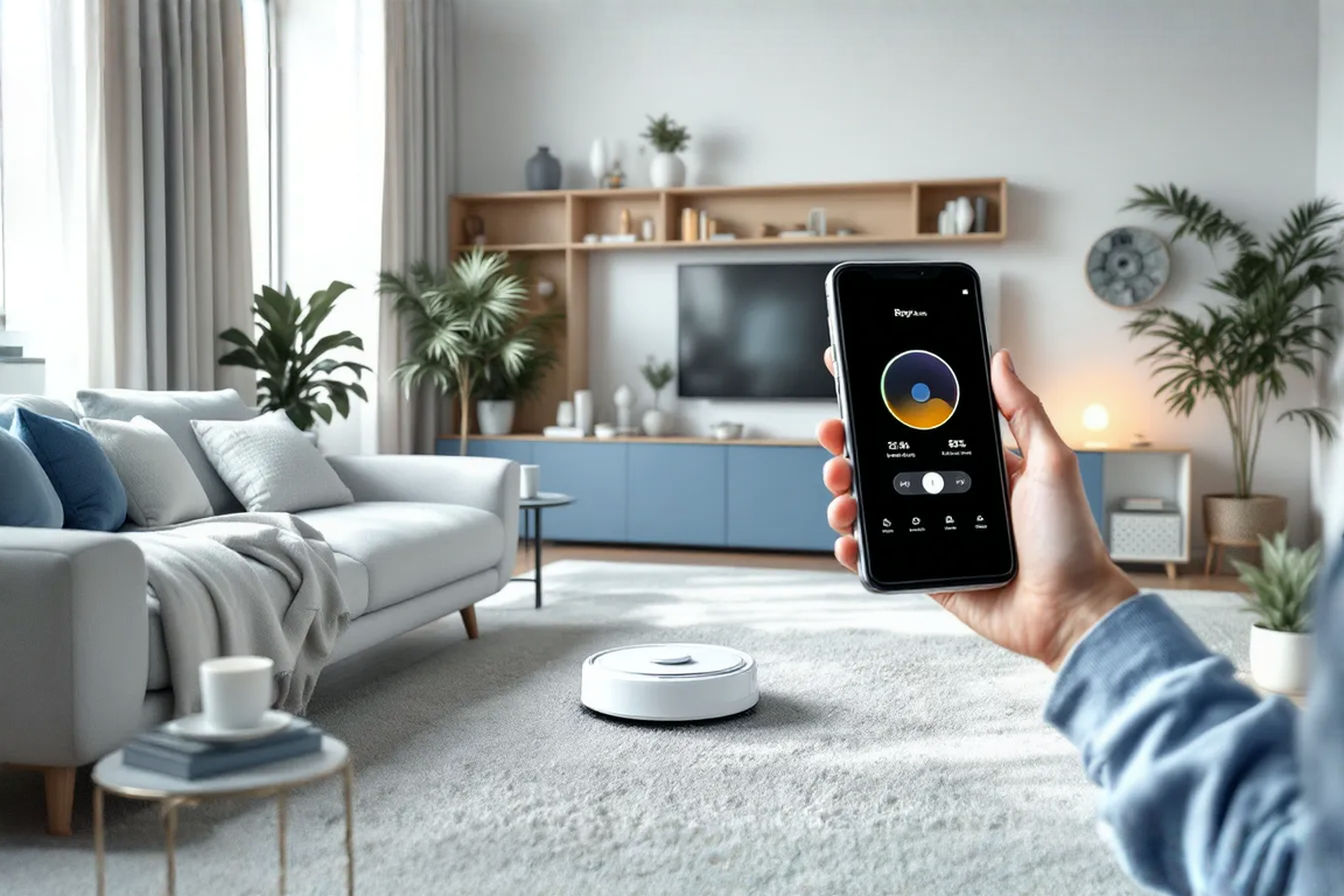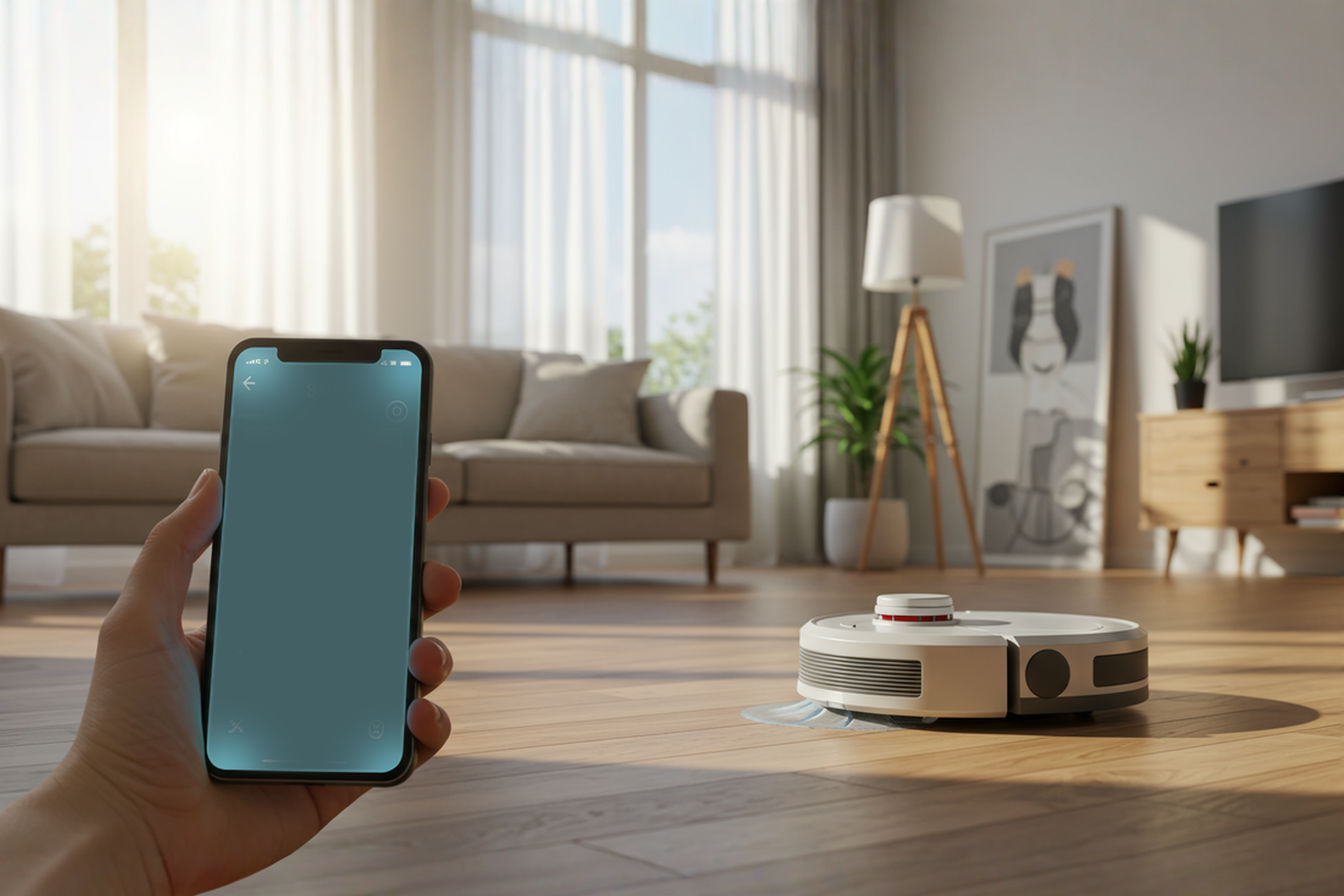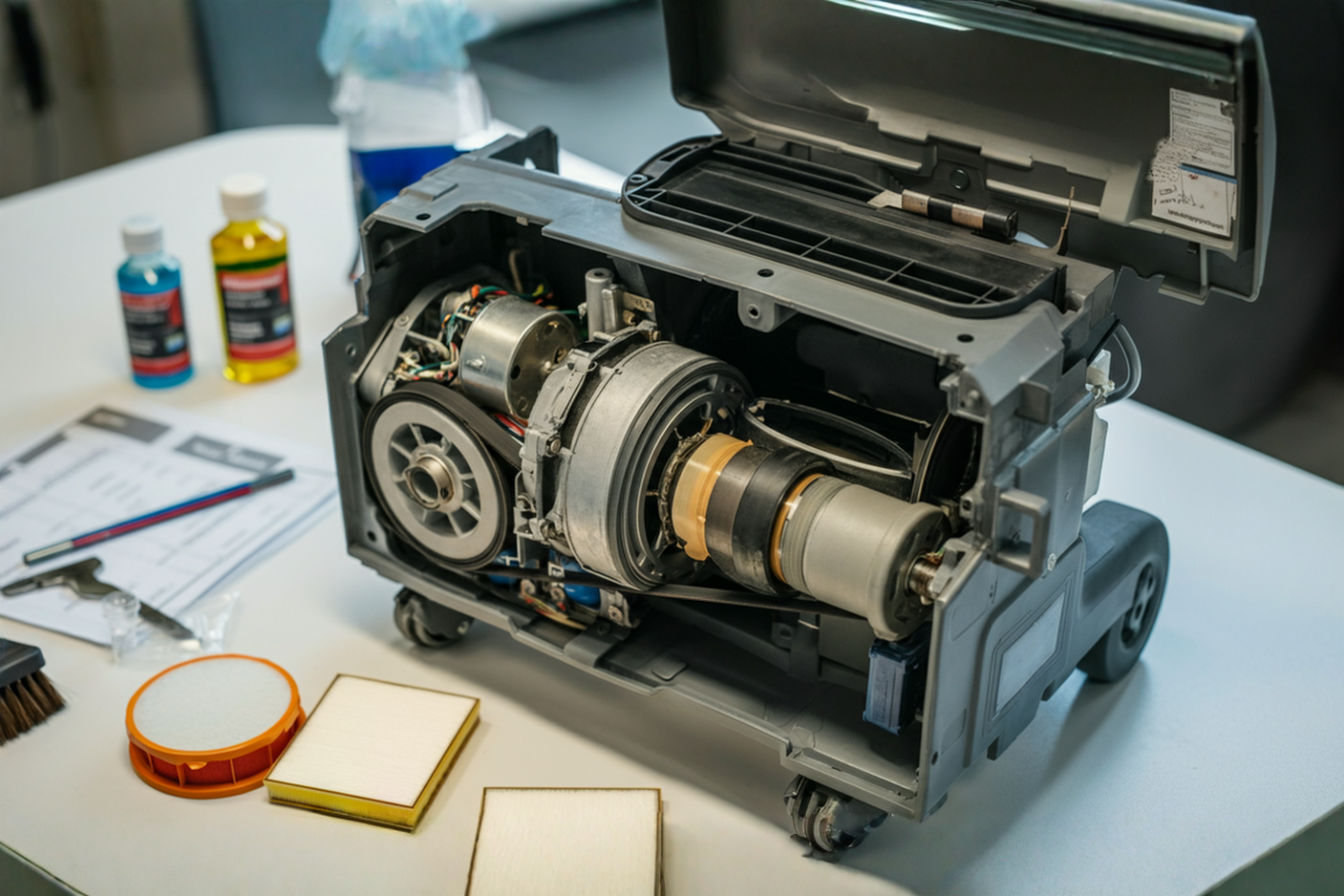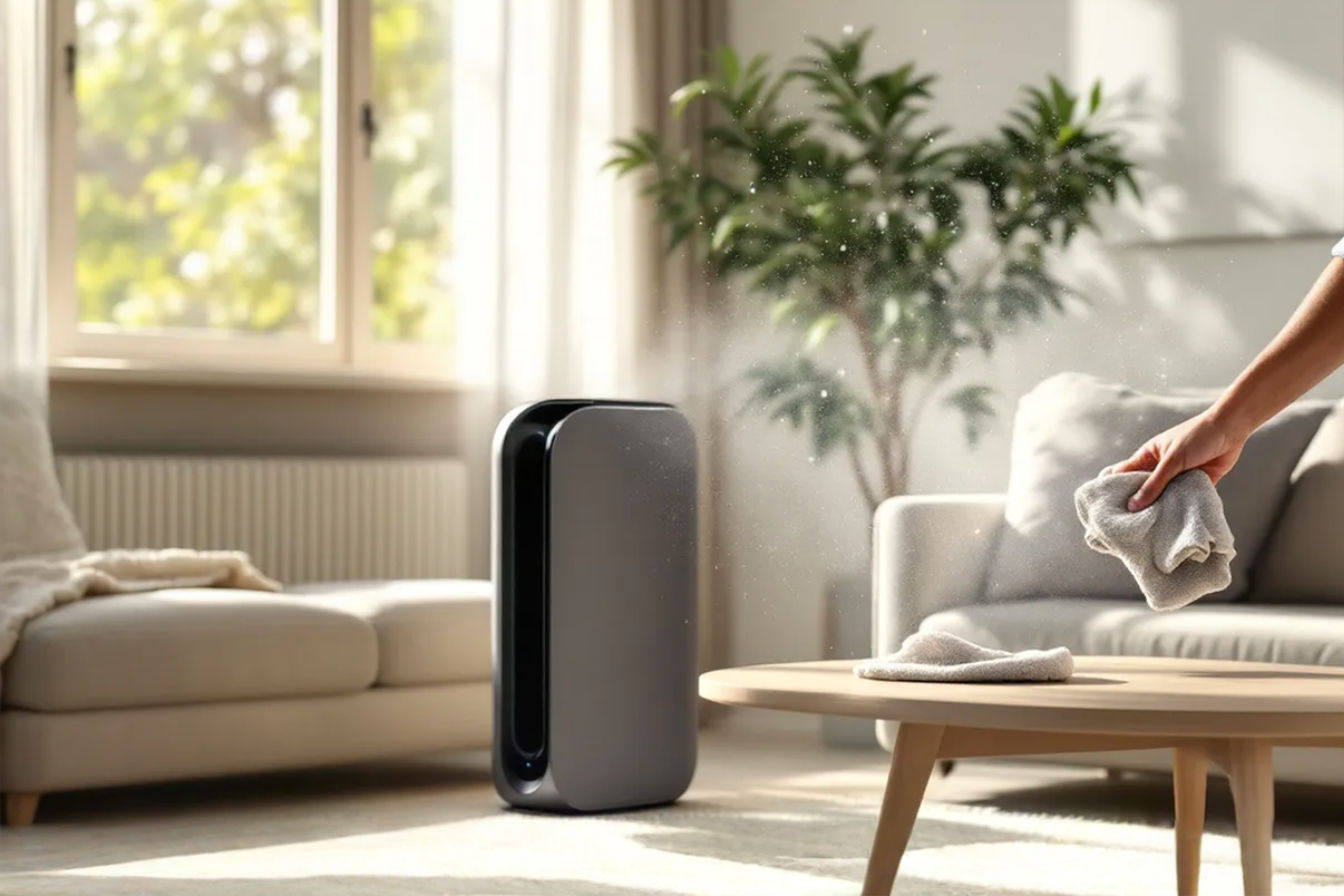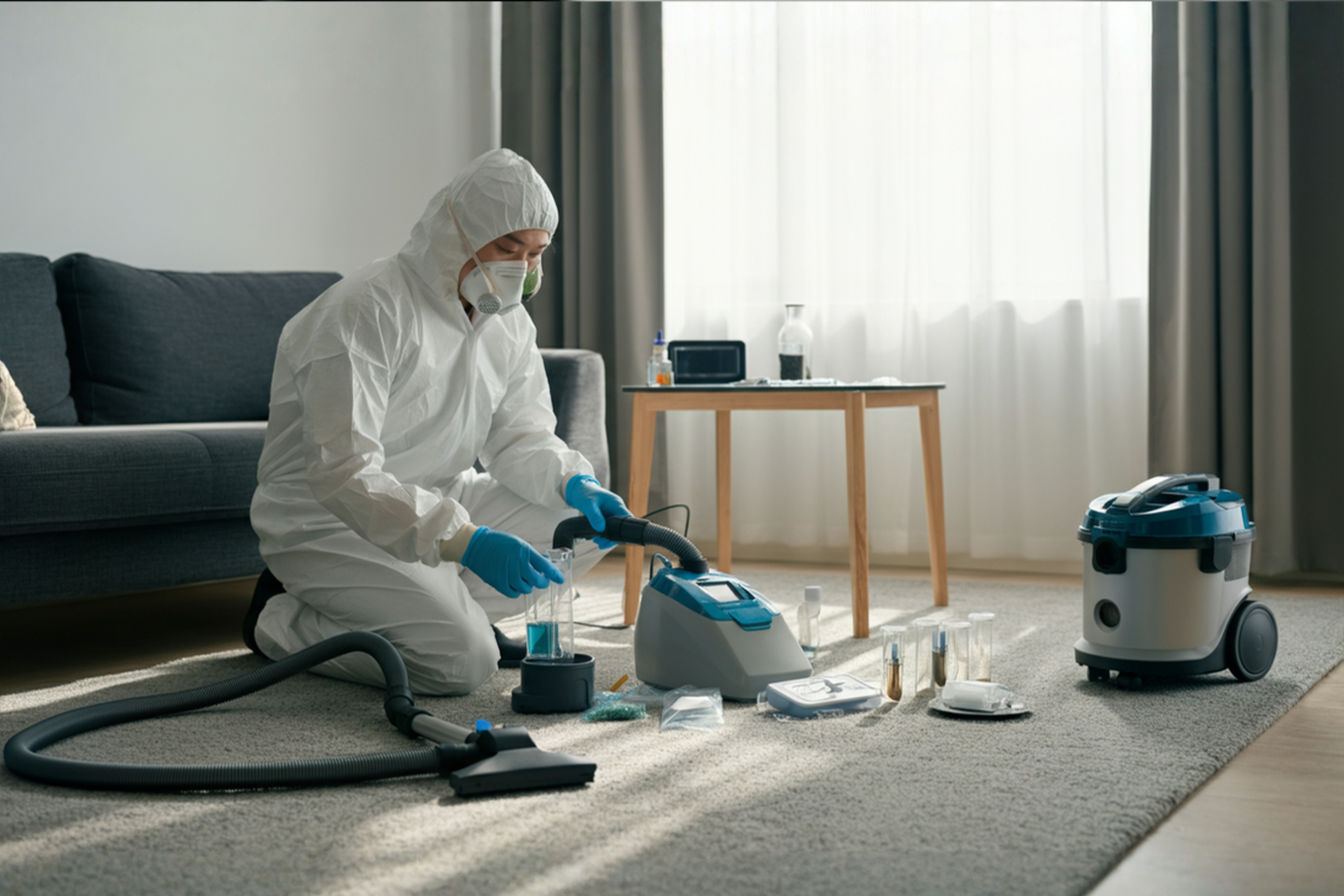House Cleaning Service Optimization: Preparing for and Supplementing Professional Help
Professional cleaning services deliver exceptional results when optimized correctly. Discover the preparation strategies that transform routine appointments into transformative experiences
This post may contain affiliate links. If you make a purchase through these links, we may earn a commission at no additional cost to you.
Professional house cleaning services represent a valuable investment in your home’s maintenance and your personal well-being. Yet many homeowners miss out on the full benefits due to inadequate preparation or ineffective supplementation between visits. Optimizing these services requires strategic planning and thoughtful execution that benefits both you and your cleaning professionals.
The proper techniques for maximizing cleaning service value extend beyond simple decluttering. A comprehensive approach encompasses everything from pre-service preparation to maintaining results between appointments. This guide explores proven strategies that transform routine cleaning visits into highly efficient sessions that deliver exceptional outcomes.
Homeowners who implement these optimization methods consistently report increased satisfaction with their cleaning services, while professionals appreciate the improved working conditions. The result creates a symbiotic relationship where both parties benefit from streamlined processes and clearer communication.
Understanding Professional Cleaning Services
What Professional House Cleaners Actually Do
Professional cleaners typically focus on general maintenance tasks including dusting, vacuuming, mopping, and sanitizing bathrooms and kitchens. Standard services commonly include bed-making, glass cleaning, and basic organization. These core responsibilities address the most visible aspects of home cleanliness while maintaining essential hygiene standards.
Certain tasks fall outside typical service parameters. Most companies exclude window washing (except interior glass), heavy lifting, exterior cleaning, biohazard cleanup, and appliance interior cleaning. Professionals often avoid pest removal, major organization projects, and personal laundry services. Understanding these boundaries helps set appropriate expectations and prevents misunderstandings.
Specialized services require separate arrangements and usually incur additional costs. Deep cleaning options might include carpet shampooing, upholstery treatment, or post-construction cleanup. Move-in/move-out services offer comprehensive solutions for transitional periods. Many companies also provide seasonal offerings such as holiday preparation cleaning or spring-renewal packages.
Setting Realistic Expectations
Service levels vary significantly among providers, ranging from basic maintenance to premium concierge cleaning. Basic packages cover essential tasks completed within scheduled timeframes. Mid-tier services expand scope to include more detailed work, while premium options often incorporate customization and additional amenities.
Time constraints significantly impact service delivery. Most residential appointments last two to four hours, necessitating efficient task prioritization. Experienced cleaners develop routines that maximize productivity within allocated windows. Recognizing these limitations helps homeowners appreciate the focus on high-impact areas rather than comprehensive coverage.
Clear communication forms the foundation of successful working relationships with cleaning professionals. Establishing preferences early prevents assumptions about product usage, technique selection, or priority areas. Written instructions, especially for initial visits, prove invaluable for ensuring consistent service delivery that meets specific household needs.
Pre-Cleaning Preparation Strategies
The Essential Pre-Clean Declutter
Effective decluttering transforms cleaning efficiency exponentially. Living rooms benefit from cleared coffee tables, organized media centers, and picked-up floors. Bedrooms require beds free of clothing, accessible dressers, and clear nightstands. Kitchen counters need emptying of small appliances, dishes, and food items to enable thorough sanitization.
Bathrooms demand particular attention during pre-service preparation. Removing personal care items, clearing counter spaces, and organizing shower products creates an environment where professionals can focus on deep cleaning rather than working around obstacles. This approach results in more thorough sanitization and improved overall outcomes.
Children’s spaces often present unique challenges requiring specialized decluttering strategies. Toy organization, floor clearance, and surface preparation accelerate service delivery in these rooms. Creating designated storage solutions encourages consistent pre-service routines that maintain efficiency over time.
Creating Access and Efficiency Pathways
Strategic furniture placement optimizes cleaning flow throughout your home. Pull beds slightly away from walls to enable complete vacuuming. Move lightweight chairs temporarily to open floor space. Position area rugs for easy lifting or cleaning underneath. These small adjustments dramatically improve professionals’ ability to clean thoroughly.
Traffic patterns should remain unobstructed during service appointments. Clear hallways, doorways, and staircases of any items that might impede movement. Remove floor clutter that could create tripping hazards or slow progress between rooms. This consideration enhances both safety and efficiency during service delivery.
Technology and electronics require special handling before cleaning appointments. Unplug and relocate sensitive equipment from dusting areas. Secure loose cords that might interfere with vacuuming. Consider temporary removal of expensive decorative items that could suffer damage during routine cleaning processes.
Securing Valuables and Private Items
Personal belongings deserve careful protection before professional cleaning visits. Jewelry, cash, and important documents should relocate to secure locations. Small valuables benefit from drawer storage or locked containers. This precaution prevents accidental displacement during thorough cleaning procedures.
Digital privacy matters extend to physical documents and devices. Close laptops, secure tablets, and store personal paperwork. Professional cleaners maintain ethical standards, but proactive security measures provide additional peace of mind. These actions also prevent cleaning interruptions when sensitive areas encounter unnecessary exposure.
Fragile items require specific attention during preparation phases. Remove delicate decorations from high-traffic cleaning zones. Relocate family heirlooms and collectibles temporarily. While most professionals exercise extreme care, accidents occasionally happen even with experienced personnel. Prevention remains the best protection strategy.
The Ultimate Pre-Service Checklist
Day-Before Preparations
Managing laundry effectively creates optimal conditions for cleaning services. Complete washing cycles for all bed linens, towels, and cleaning cloths. Store clean laundry appropriately to prevent re-cluttering recently cleaned spaces. Consider stripping beds in preparation for fresh linen installation if included in your service package.
Kitchen preparation significantly impacts service efficiency. Run dishwashers to completion, emptying them before service arrival. Clear sinks of standing dishes and utensils. Wipe down major spills or sticky residues that might require extensive attention. These actions allow professionals to focus on deeper cleaning tasks instead of basic maintenance.
Bathroom readiness ensures maximum sanitization benefits. Empty trash receptacles, remove floor mats, and clear shower caddies. Declutter medicine cabinets and under-sink areas requiring attention. Place fresh towels in accessible locations for immediate use after cleaning completion.
Day-Of Preparations
Pet management represents a crucial consideration for cleaning appointments. Secure animals in designated rooms or arrange temporary relocation during service. Inform cleaners about pet locations and any specific behavioral concerns. Clean up pet accidents beforehand to prevent delays and additional charges.
Entry procedures streamline service arrival and departure. Provide clear access instructions, security codes, or spare keys as needed. Ensure pathways remain clear for equipment transport. Post any special instructions near entry points for immediate visibility upon arrival.
Effective communication protocols establish clear expectations from the outset. Leave written notes for specific concerns or priorities. Identify areas requiring special attention or avoidance. Include contact information for emergency questions during service. These measures foster understanding and prevent miscommunication.
Maximizing Your Service Investment
Effective Communication with Cleaners
Clear instruction methods create optimal conditions for service excellence. Written guidelines provide consistent reference points for recurring appointments. Digital communication platforms offer convenient channels for updates and schedule changes. Face-to-face discussions during initial visits establish foundational understanding of household preferences.
Priority setting techniques ensure focus on areas most important to homeowners. Identify 2-3 critical zones requiring extra attention each visit. Rotate priorities periodically to maintain comprehensive coverage over time. Communicate urgency levels for specific tasks to guide professional decision-making during time-constrained services.
Feedback systems facilitate continuous improvement in service delivery. Provide constructive comments shortly after each visit. Address concerns promptly through established channels. Express appreciation for exceptional work to reinforce positive behaviors. This ongoing dialogue strengthens working relationships and enhances satisfaction levels.
Timing and Scheduling Optimization
Strategic scheduling maximizes cleaning effectiveness throughout the year. Midweek appointments often offer greater availability and consistency. Morning services typically yield fresher results lasting through evening hours. Seasonal adjustments accommodate changing household needs and activity patterns.
Frequency optimization balances cleanliness standards with budget considerations. Weekly services maintain pristine conditions in high-traffic homes. Bi-weekly appointments suit moderate activity levels with supplemental self-cleaning. Monthly deep cleans work for minimal-mess households with strong maintenance habits.
Seasonal deep cleaning schedules address cyclical household needs. Spring cleaning tackles winter accumulation and prepares for outdoor living. Summer services focus on high-humidity challenges and vacation preparations. Fall appointments ready homes for holiday entertaining. Winter cleanings combat indoor allergens and maintain health during closed-window seasons.
Cost-Benefit Analysis and Budgeting
Understanding pricing structures enables informed decision-making about service selection. Hourly rates offer flexibility for varying needs and home sizes. Flat fees provide predictable budgeting for standard services. Package deals combine multiple services at discounted rates. Compare options to determine optimal value for your specific situation.
Value-added services deserve careful evaluation based on household requirements. Oven cleaning, refrigerator sanitization, and interior window washing enhance basic packages. Organizing assistance, laundry service, and errand running expand functionality beyond traditional cleaning. Assess each option’s cost-effectiveness relative to your time savings and quality-of-life improvements.
Long-term strategies optimize cleaning investments over extended periods. Loyalty programs offer graduated discounts for consistent patronage. Bundle multiple properties for volume pricing if applicable. Schedule strategically around life events to maximize budget efficiency. These approaches reduce overall costs while maintaining desired cleanliness standards.
Between-Service Maintenance Strategies
Daily Maintenance Routines
Quick-clean protocols prevent accumulation between professional visits. Implement ten-minute tidy sessions each evening before bedtime. Focus on high-visibility areas like entryways, kitchens, and living rooms. Address spills immediately to prevent staining and reduce deep-cleaning needs.
High-traffic zone management requires consistent attention to maintain appearance. Sweep or vacuum entryways daily to control dirt tracking. Wipe kitchen counters after each use to prevent buildup. Clean bathroom sinks nightly to maintain hygiene standards. These small efforts yield significant cumulative benefits.
Preventive measures reduce overall cleaning requirements significantly. Use doormats effectively to trap outdoor contaminants. Implement shoe-free policies indoors where practical. Place coasters and placemats strategically to protect surfaces. These habits minimize wear and tear while extending professional cleaning results.
Weekly Supplemental Cleaning
Focus area rotation ensures comprehensive coverage throughout your home. Dedicate specific days to particular rooms or tasks. Monday bathrooms, Tuesday bedrooms, Wednesday living areas creates manageable routines. This systematic approach prevents overwhelming weekend cleaning marathons.
Surface maintenance techniques preserve professional results longer. Dust exposed surfaces with microfiber cloths weekly. Polish mirrors and glass as needed to maintain clarity. Spot-clean walls and baseboards to address marks promptly. These targeted efforts sustain overall cleanliness between services.
Deep-clean spot treatments address problem areas before they worsen. Target kitchen grout lines showing discoloration. Focus on bathroom fixtures developing mineral deposits. Address carpet stains while fresh and treatable. Prompt attention prevents permanent damage requiring expensive remediation.
Creating a Sustainable Routine
Family involvement transforms cleaning from chore to cooperative effort. Assign age-appropriate tasks to children, teaching responsibility. Create partner agreements for shared duties. Establish reward systems for consistent participation. Team approaches lighten individual burdens while strengthening household bonds.
Time-blocking dedicates specific periods to cleaning activities efficiently. Schedule 15-minute morning reset sessions for general tidying. Allocate 30-minute evening slots for deeper tasks. Reserve weekend hours for family cleaning projects. Structured timing prevents procrastination and ensures consistent maintenance.
Efficiency tools and products streamline cleaning processes significantly. Invest in quality microfiber materials for superior dust collection. Use multi-surface cleaners to reduce product switching. Consider robotic vacuums for daily floor maintenance. These investments pay dividends through time savings and improved results.
Advanced Optimization Techniques
Customizing Service Agreements
Service plan modifications accommodate changing household needs effectively. Negotiate seasonal adjustments reflecting activity patterns. Request task rotation schedules for comprehensive coverage. Explore tiered pricing options matching budget fluctuations. Flexible agreements ensure continued satisfaction despite evolving circumstances.
Add-on service optimization balances enhanced cleanliness with cost considerations. Evaluate carpet cleaning frequency based on traffic patterns. Schedule window washing around weather conditions. Time appliance cleaning with manufacturer maintenance recommendations. Strategic timing maximizes value from supplementary services.
Frequency adjustments fine-tune service delivery to actual requirements. Increase visits during high-activity periods like holidays. Reduce frequency during extended absences or low-use seasons. Implement trial periods for new schedules before committing long-term. Data-driven decisions optimize resource allocation effectively.
Building Long-Term Partnerships
Relationship development with cleaning professionals yields numerous benefits. Learn individual preferences and work styles for improved collaboration. Share household insights facilitating more efficient service delivery. Express genuine appreciation for consistent quality performance. Strong connections enhance service reliability and satisfaction.
Loyalty rewards programs offer tangible benefits for sustained patronage. Accumulate points toward free services or upgrades. Access preferred scheduling slots during peak demand periods. Receive priority status for emergency cleaning needs. These incentives justify commitment to single providers.
Trust-building practices establish foundations for exceptional service experiences. Maintain clear communication channels for ongoing dialogue. Honor payment agreements promptly and consistently. Respect professional boundaries while fostering friendly rapport. Mutual trust enables service customization exceeding standard offerings.
Common Mistakes and Solutions
Preparation Pitfalls
Over-cleaning before service represents a widespread misconception. Pre-service cleaning should facilitate professional work, not duplicate it. Focus on decluttering and organizing rather than scrubbing surfaces. Trust professionals to handle deep cleaning tasks appropriately.
Inadequate communication leads to misaligned expectations and disappointment. Provide written instructions for first-time services. Update preferences regularly as needs change. Address concerns promptly through established channels. Clear dialogue prevents misunderstandings and ensures satisfaction.
Improper expectation setting creates unnecessary tension in service relationships. Understand time limitations affecting service scope. Recognize the distinction between maintenance and deep cleaning. Accept that perfection requires ongoing effort beyond professional visits. Realistic outlooks foster appreciation for actual results achieved.
Maintenance Missteps
Neglecting between-service care undermines professional cleaning investments. Allowing excessive buildup between visits requires remedial attention. Ignoring spills and stains enables permanent damage. Failing to maintain organization creates inefficient service delivery. Consistent upkeep preserves professional results longer.
Inconsistent scheduling disrupts cleaning momentum and efficiency. Irregular appointments prevent establishing effective routines. Frequent cancellations reduce provider reliability commitments. Extended gaps between services allow excessive accumulation. Regular schedules optimize outcomes and satisfaction.
Inefficient product usage wastes resources and compromises results. Using incorrect cleaners for specific surfaces causes damage. Over-diluting concentrated solutions reduces effectiveness. Mixing incompatible chemicals creates safety hazards. Follow professional recommendations for optimal outcomes.
Conclusion
Optimizing professional house cleaning services requires a comprehensive approach encompassing preparation, communication, and maintenance strategies. Proper implementation of these techniques transforms routine cleaning appointments into highly efficient sessions delivering exceptional value. The synergy between homeowner preparation and professional expertise creates superior results exceeding standard service expectations.
Long-term benefits extend beyond immediate cleanliness to encompass improved home maintenance, reduced stress levels, and enhanced quality of life. Financial savings materialize through strategic scheduling, preventive maintenance, and efficient resource utilization. These advantages justify the initial effort required to establish optimization systems.
Begin implementing these strategies systematically, focusing first on pre-service preparation routines. Gradually incorporate communication improvements and maintenance protocols as habits develop. Remember that optimization represents an ongoing process requiring periodic evaluation and adjustment. Your commitment to these practices ensures maximum return on cleaning service investments while maintaining a consistently clean and comfortable living environment.

